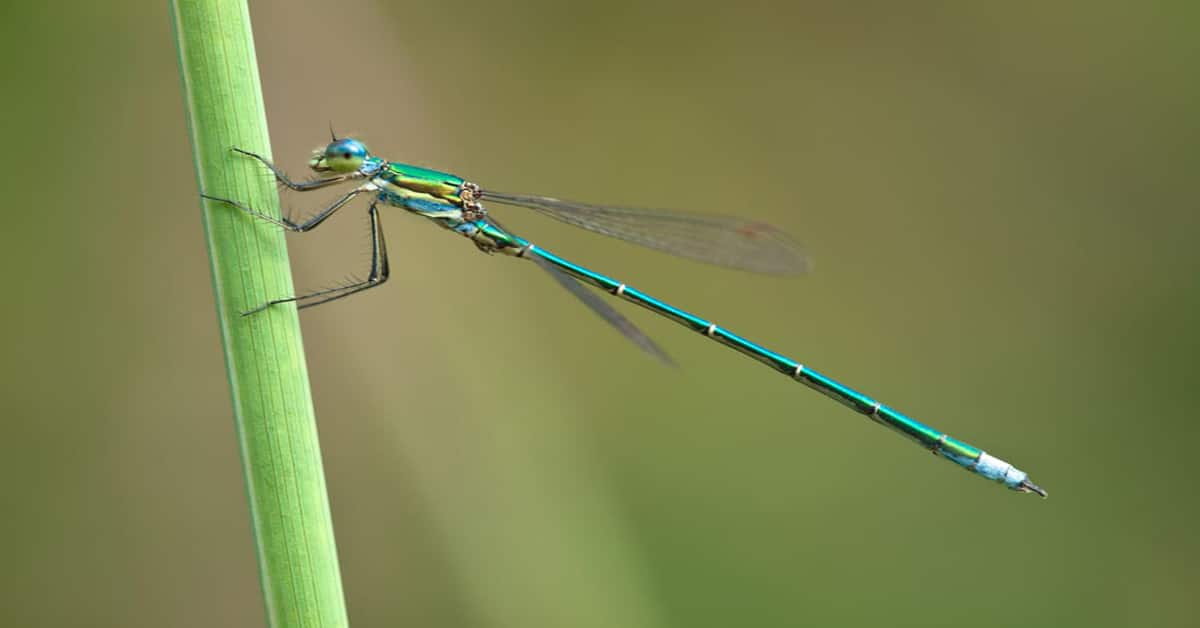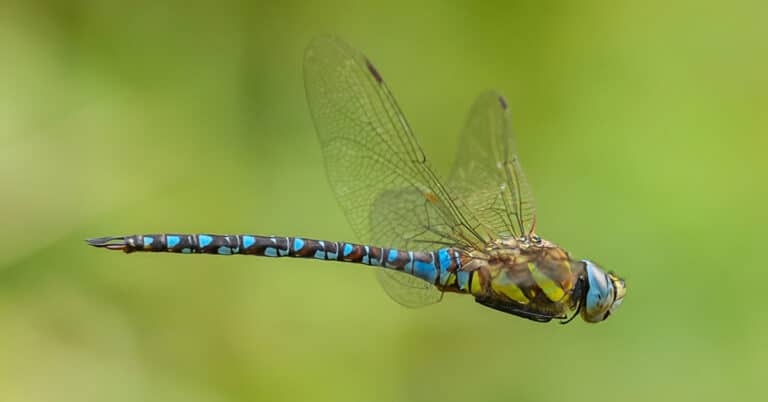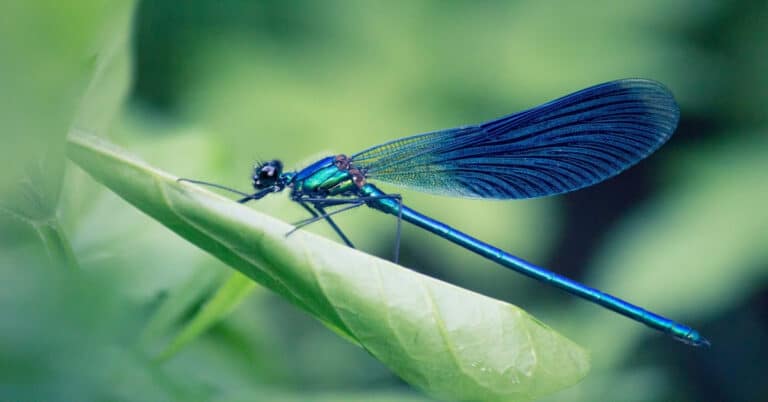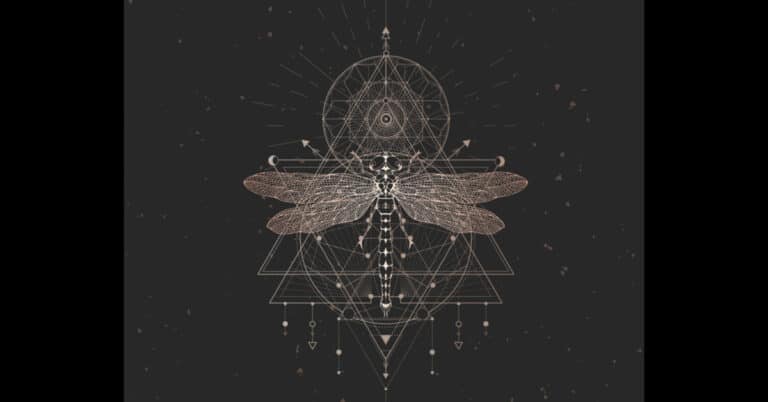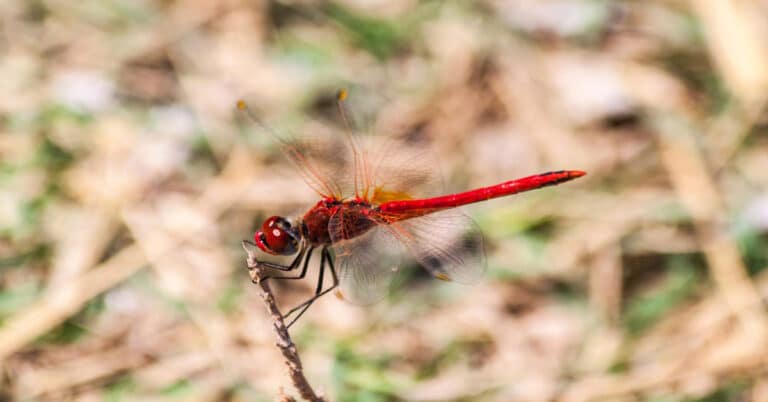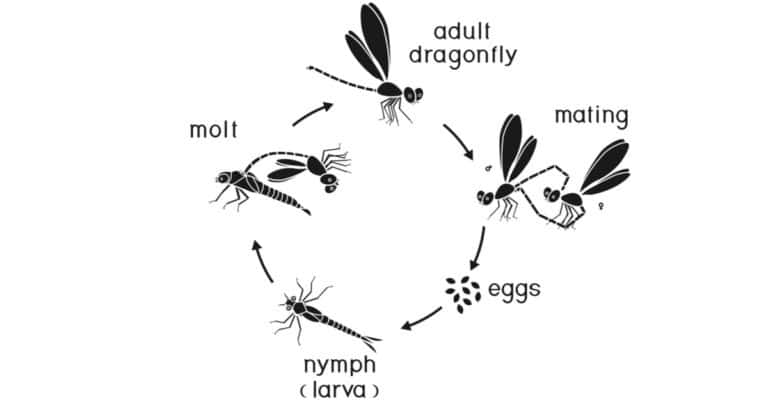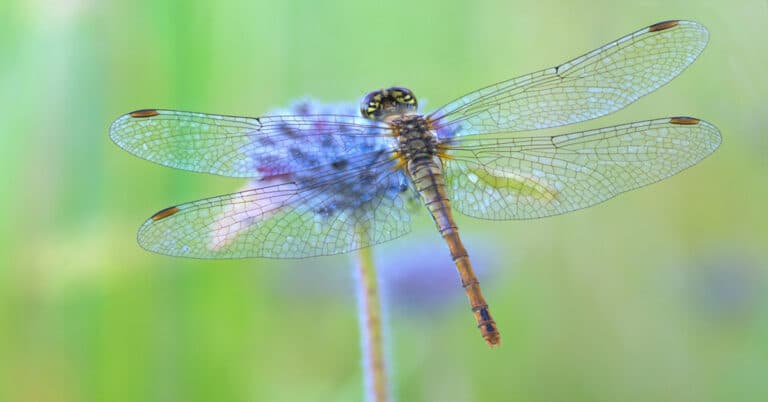Damselfly
Damselflies are flying insects from the Odonata order and Zygoptera suborder. In appearance, they are quite similar to the Dragonflies that belong to the Anisoptera suborder, but are comparatively lighter in build than the latter ones. The Damselflies are believed to exist from the period of the Lower Permian, and are widely distributed on every continent besides Antarctica.
Description
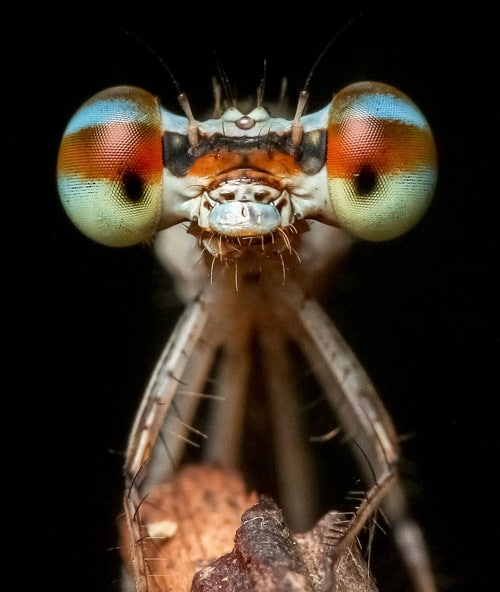
The body structure of a Damselfly and a Dragonfly is much alike. The eyes are compound like the Dragonflies, but are comparatively smaller and widely separated.
The forehead is present above the eyes, and below the forehead is the clypeus (Wiki- one of the sclerites that make up the “face” of an arthropod). The prey catching organ, the labrum is present on the upper lip, and on the top part of the head, are the three eyes known as Ocelli, which helps them to measure the intensity of light. They also have two small antennae over the head to measure the air speed. The wingspan of this insect ranges between 18mm to 19cm. The male Damselfly is more distinctive in features and become more brightly colored, compared to the female. The female is cryptically colored, plain and difficult to recognize. For instance, the Eurasian Bluets male has a bright blue colored body with black patches, while the female has a more green or brown shaded body with black markings. The female Damselflies are found in two forms, one is similar to the male pattering and the other is distinct in appearance. The type resembling the males, the andromorph (Wiktionary -An organism with male physical characteristics) are just one third of the total female population. It is a significant feature, as the male appearance helps to overcome the male harassment.
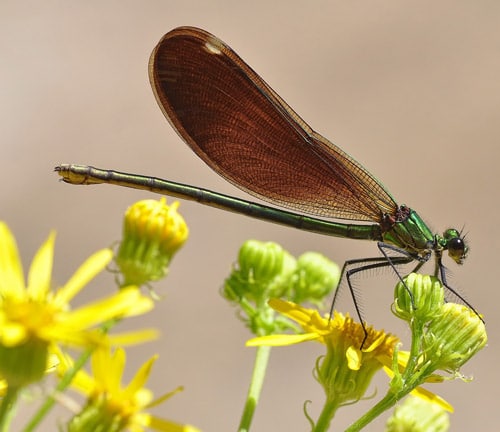
Habitat and Distribution
Damselflies occur in all the continents, excluding Antarctica. But unlike Dragonflies, this insect can be found only in smaller ranges. For breeding purposes, most Damselflies are found in the freshwater habitat, while a few from the family Caenagrionidae, and prefer to breed in brackish water.
In the whole class, this is the single species that also breed in sea water.
Food
The matured Damselflies feed on mosquitoes, flies and other tiny insects. They often hover among low vegetations and grasses, eating the prey found on the leaves and stems by picking them with their thorny legs. Predominantly, they make use of their compound vision to locate the prey, but in some species, the adults also use olfactory cues to search their food. Generally, this creature does not feed at night, but some may take advantage of the newly emerged flies and aquatic insects
Helicopter Damselfly
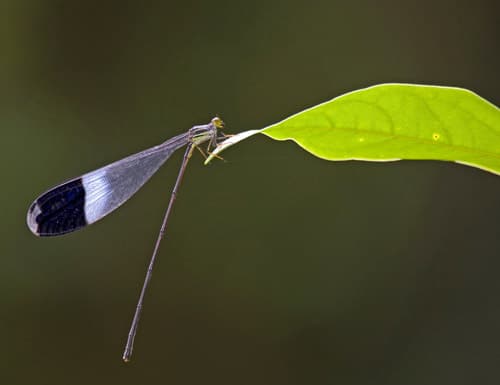
In the tropical areas of South America, the species Pseudostigmatidae, also known as Helicopter Damselflies catch spiders by hovering around the web, as well as their prey entangled in the web. The Damselflies as a nymph chooses its prey, according to its size. They are not powerful enough to catch large species like the Dragonflies do. The major diet of this creature constitutes of water fleas and crustaceans.
Reproduction
The mating process of Damselflies is a complex procedure as in the Dragonflies. It involves both delayed fertilization and indirect insemination. They also carry out courtship rituals, in which the male tries to attract the female counterpart towards his territory by showing off his wings, flying rapidly or by some other actions. If the female is willing then she will stay on the perch, and if not receptive, then she will fly away.
Damselflies Mating
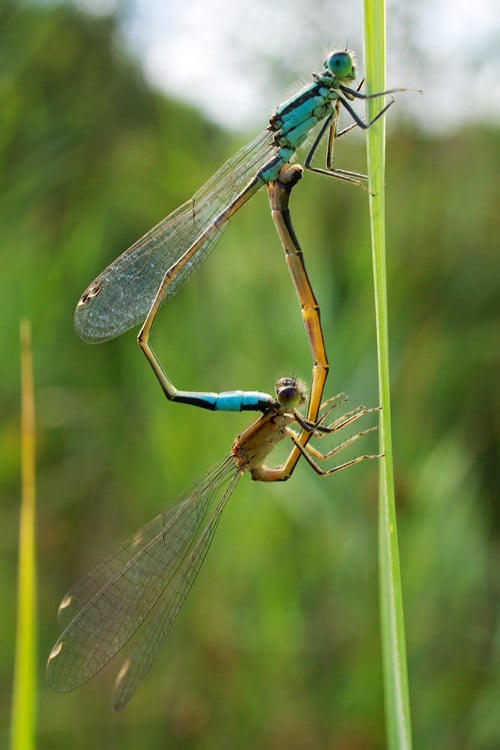
When the male is ready to mate, the sperm is transferred from the opening of the primary genital on the 9th segment close to the end part of the abdomen to the subsidiary genitalia situated on the segment 3 and 2, which is close to the base of its abdomen. In the beginning of the process, the male holds the female with his claspers on the back of the female’s head, while the female twists her abdomen forwards and downwards to collect the sperm from the secondary genitalia of the male Damselfly. This specific position is referred as “wheel” or “heart”, and the termed used when they indulge in this process is “to be in cop”.
The female Damselflies, when ready to deposit eggs, hover around the water body to find suitable habitat for egg laying. Some also lay eggs inside the tissue of plants. For laying eggs in the water, the female Damselflies may submerge under the water for at least 30 minutes, and at intervals, climb on the aquatic plant’s stem. During this period, the male guards the female and the eggs from other rival male Damselflies.
Life Cycle
Damselflies are known as hemimetabolous insects, which does not have a pupa stage in their life cycle. The female Damselfly transfers the eggs into the slits by her ovipositor in the water plants and other vegetations. Hence, the next stage referred as nymphs or naiads that hatch from the eggs are aquatic in nature. The exceptional species are Hawaiian Mealagrion Oahuense and an unnamed species from Megapodagrionid, which lives on land during their larval stage. The spread wings deposit eggs just above the surface of the water, in the end of the year, and the Damselfly eggs overwinter resulting in getting covered by snow. They hatch out in the spring season into the melt water pool. Thus, they leave their nymph stage in the temporary pool formed by the melt water, and transforms into an adult before it dries up.
The larval stage of Damselflies or the nymph are also a voracious and brutal predator that feed by capturing their prey with the help of a flat toothed mouthpart known as labium in the lower part of the jaw. The resting labium thrusts out instantly and pierces the mosquito larvae, water fleas, and other tiny aquatic insects. These aquatic organisms breathe with the fin-like three external and large gills situated on the edge of the abdomen. This organ is also used by the Damselfly nymph for locomotion purpose, just like the fish’s tail. Their elongated and slender body seems to be evolved to adapt the fast moving water habitat. They undergo a dozen molts before transforming into an adult Damselfly. In the final stage, the nymph makes a way out of the water and settles on a firm base to undergo the metamorphosis process. On the thorax, the skin splits and the adult form of Damselfly wriggles out of it. Initially, the body of the adult is soft, and it hangs on the empty larval skin. Slowly, the limp wings are pumped with haemolymph, after which it stretches fully. The abdomen is also pumped with haemolymph to expand. Later, the exoskeleton of this creature hardens, and it becomes brighter colored within a few weeks. Most species emerge in the day time, as the hot climate helps the cuticle to harden quickly and the adult can fly away easily within thirty minutes.
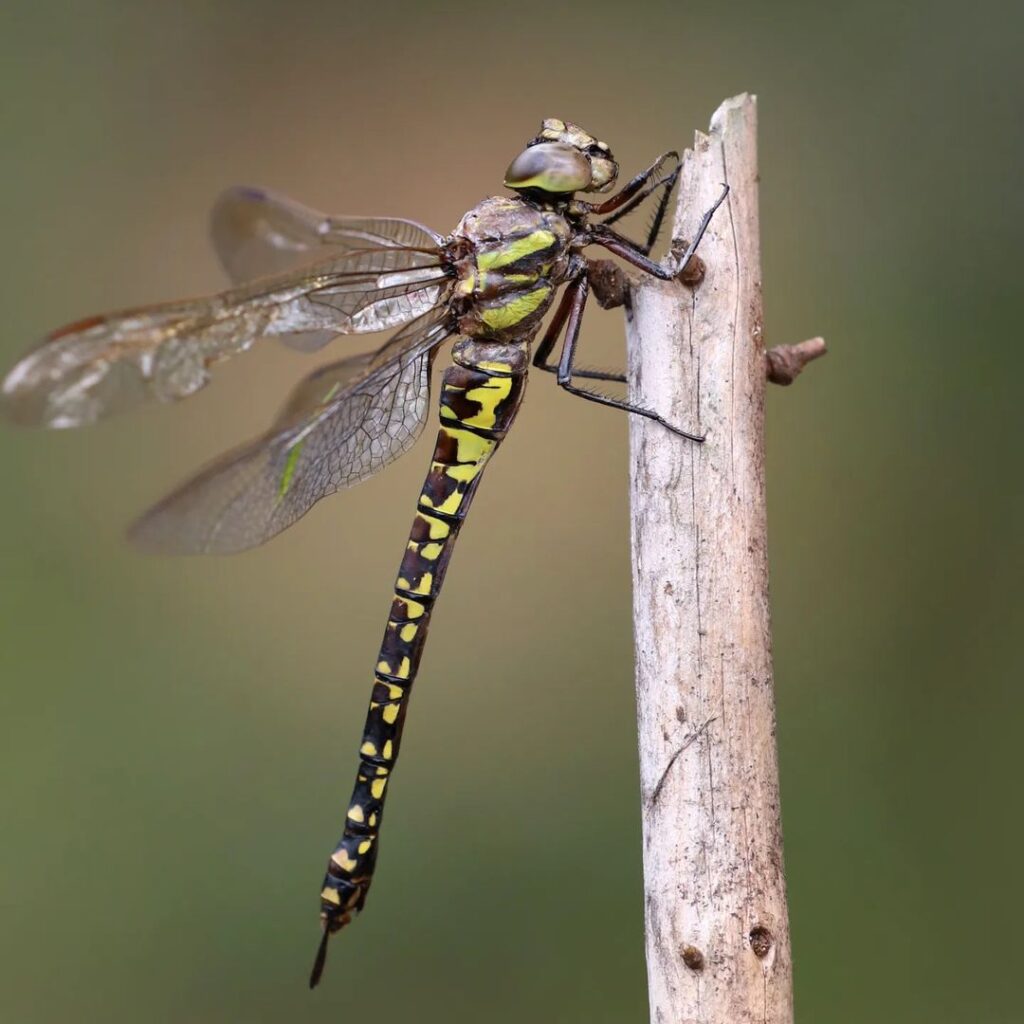
Conservation
Similar to the Dragonflies, the Damselflies are also affected due to the clearance of forests, pollution, decrease in the level of ground water, river water damming for hydroelectric need and decrease in their habitat. They cannot tolerate pollution, unlike the Dragonflies, hence the water bodies getting polluted and drying up is also a matter of concern.
Classification
Damselfly belongs to the Caenagrionidae family, in which there are five genera, namely,
Genus: Amphiagrion
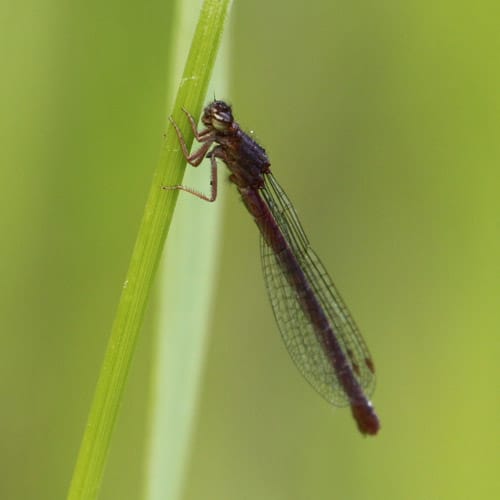
This genus consists of two species from North America, out of which one is from Idaho. In this genus, a species of red and black color is found. The abdomen and thorax are larger in this genus than other species of this family. The name of the species is-:
Amphiagrion Abbreviatum- Western Red Damselfly.
Genus: Argia

Damselflies of this genus are basically stream dwellers. The naiads of this damselfly are stockier ad shorter, compared to the other species of this family. The adults are known to be agile flyers, and are commonly referred as “Dancers” for their unique flight style. They can be found in sunny spots for perching, though they do not prefer to perch for a long time.
Argia Emma- Emma’s Dancer
Argia Alberta- Paiute Dancer
Argia Vivida- Vivid Dancer
Genus: Coenagrion
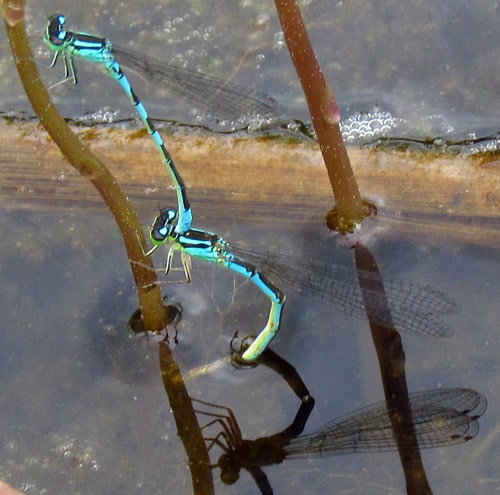
Damselflies of this genus look similar to the Enallagma species and share the common name, Bluets. The only difference is that the nymph of Coenagrion has six segments in their antenna compared to the seven in the other species. The name of the species is-:
Coenagrion resolutum- Taiga Bluet
Genus: Enallagma
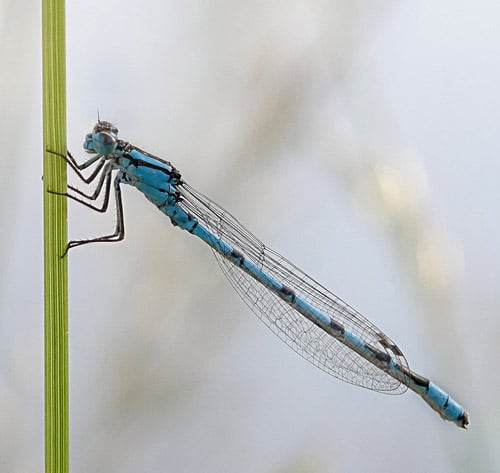
These damselflies are referred as “damselflies (little blue)”, which are found in a great number near that are generally, weedy. The male damselfly is generally banded in blue shade with black, thereby acquiring the name, “Bluet”. The female counterpart is either brown or olive, and sometimes appears like the male. Some of the species are-:
Boreal Bluet- Enallagma Boreale
River Bluet -Enallagma (Anna)
Tule Bluet – Enallagma Carunculatum
Northern Bluet- Enallagma Cyathigerum
Alkali Bluet- Enallagma Clausum
Marsh Bluet – Enallagma Ebrium
Genus: Ischnura
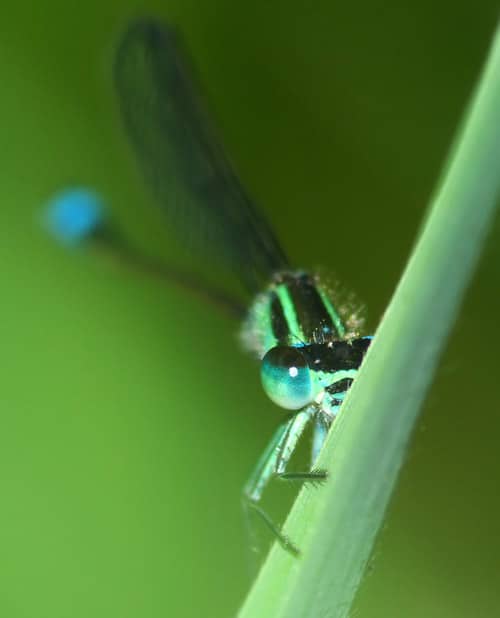
The damselflies of this genus are very small and slender compared to the Bluets. The male Damselfly has a solid black abdomen except the segments nine and eight, which are dark blue in shade. Even the thorax’s side portion of this species is green in color. But damselfly in the nymph stage is similar in appearance to the Bluets. Besides, they inhabit similar places.
Some of the species are-:
- Black-fronted Fork tail – Ischnura Denticollis
- Pacific Fork tail – Ischnura Cervula
- Western Fork tail – Ischnura Perparva

Having discovered a fondness for insects while pursuing her degree in Biology, Randi Jones was quite bugged to know that people usually dismissed these little creatures as “creepy-crawlies”.

